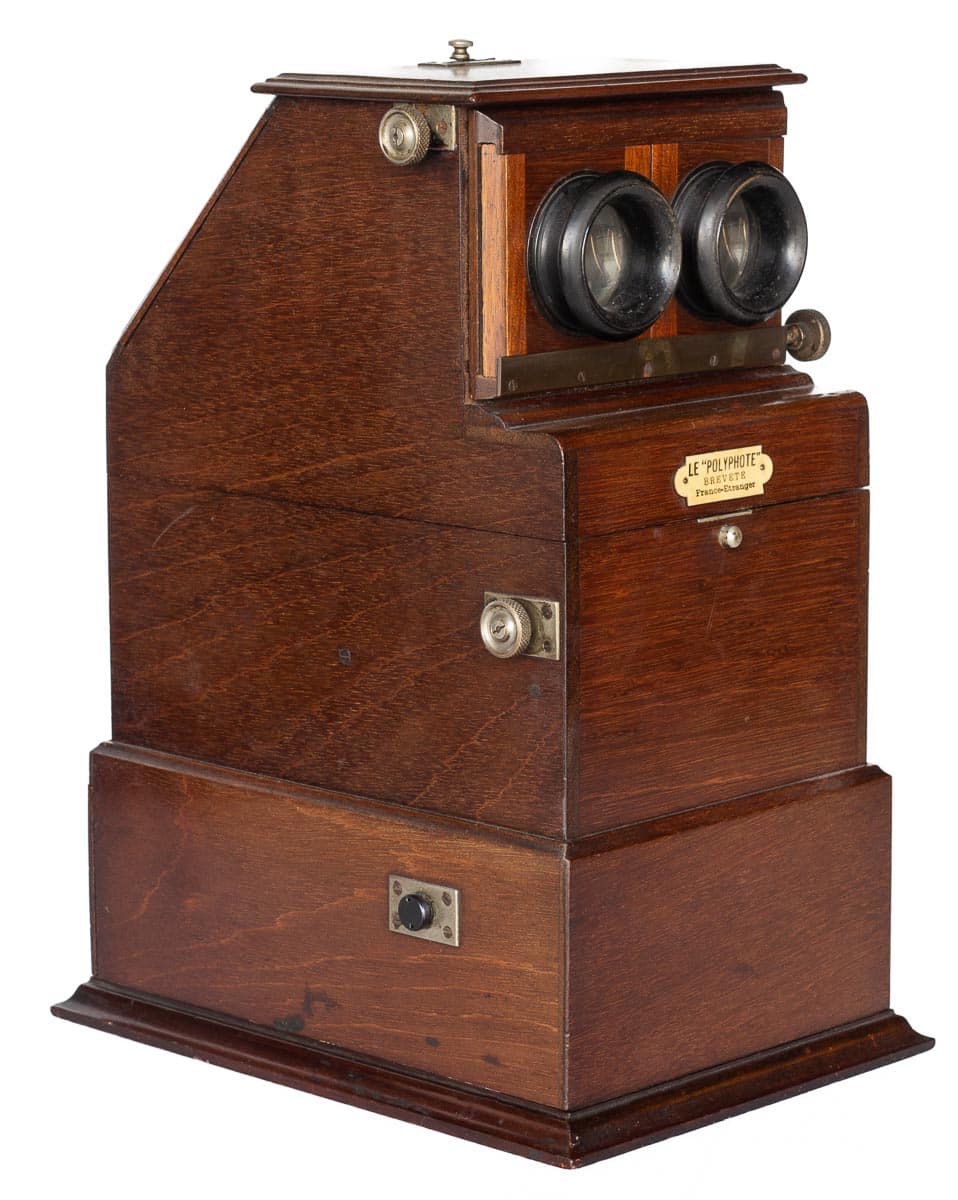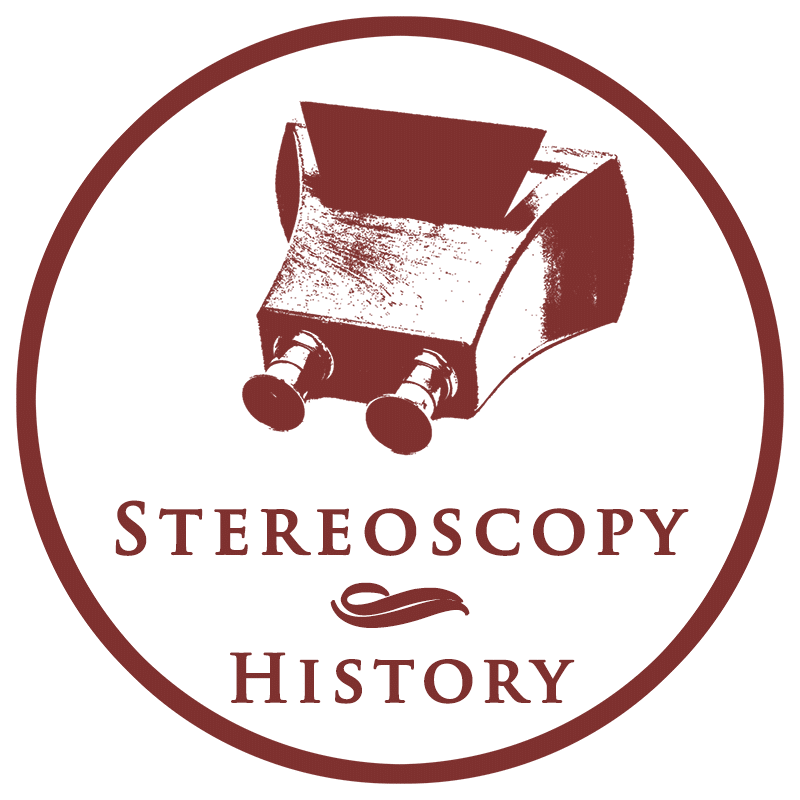
Le Polyphote is a more conventional multi-view stereoscope based on slide trays, but it is more compact than similar designs of the same period. It is remarkable that the viewer is compatible with the slide trays of Jules Richard’s famous Taxiphote stereoscope.
When a key-shaped knob is turned anti-clockwise, a glass slide is lifted out of the tray and placed in front of the lenses. Turning the knob clockwise places the slide back, and the tray is moved to load the next slide. A button on the left allows users navigate to a specific slide number. On the right side, a fold-out plate with a little mirror is used to read the number on the tray of the loaded slide. A small cabinet at the bottom of the device can store one slide tray. An optional accessory is a holder (socle basculeur) on which the viewer can be placed. This holder can be tilted to create an oblique viewing angle. As a result, the viewer does not have to be placed at eye level but can be placed on a low table and still provide a good viewing experience.
Specifications
| Manufacturer: | Lucien Bize, Robert Pleyau |
| Year of introduction: | 1910 |
| Year of manufacture: | 1910-1915 |
| Type: | Table-top |
| Viewer: | Multi-view |
| Mechanism: | Tray-based |
| Bidirectional navigation: | No |
| Serial number: | None |
| Stereoview support: | Glass |
| Stereoview format: | 45 x 107 mm |
| Number of slides: | 25 |
| Lens focussing: | Yes |
| Inter-ocular adjustment: | Yes |
| Eyepiece blinders: | No |
| Dimensions (L x W x H): | 23.5 x 17 x 31.5 cm |
| Construction: | Mahogany |
| Other features: | Plate with Le “Polyphote” – Breveté France Étranger |
Glossary: inter-ocular adjustment / multi-view / tabletop / tray-based
Lucien Bize
Lucien Albert Bize (1866–?) designed a range of innovative and compact stereoscopes in the early 20th century in France. Many names were associated with the manufacturing of his designs. In 1902, Bize patented his first stereoscope design for the detachable hand-held stereoscope that was marketed under the name L’Omnium. His early stereoscope designs were manufactured by Maison Gustave Jacob at 22, Rue Oberkampf in Paris. After Jacob’s bankruptcy in 1911, Bize continued the manufacturing of stereoscopes at 69, Rue Oberkampf.
On 1 January 1913, Bize sold his company to Robert Pleyau. Bize’s last patent was filed in 1912. Pleyau sold a part of his business activities to La Société E. Brose et Cie in 1917, but he remained active as an entrepreneur at 69, Rue Oberkampf. It is unclear if Pleyau sold the business activities that were related to stereoscopes, but it seems that the manufacturing of Bize’s stereoscopes ended during the First World War.
The complete story of Lucien Bize
